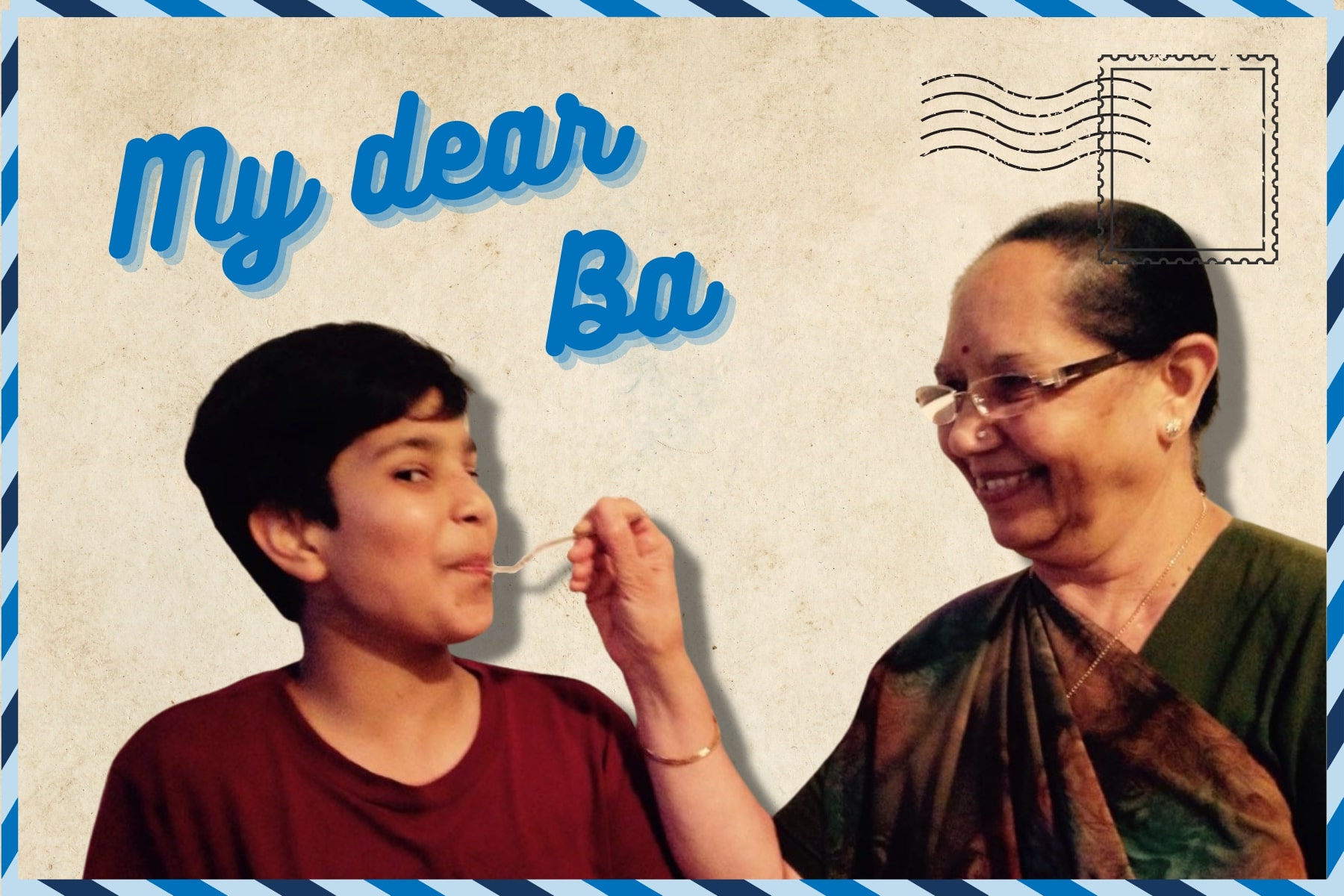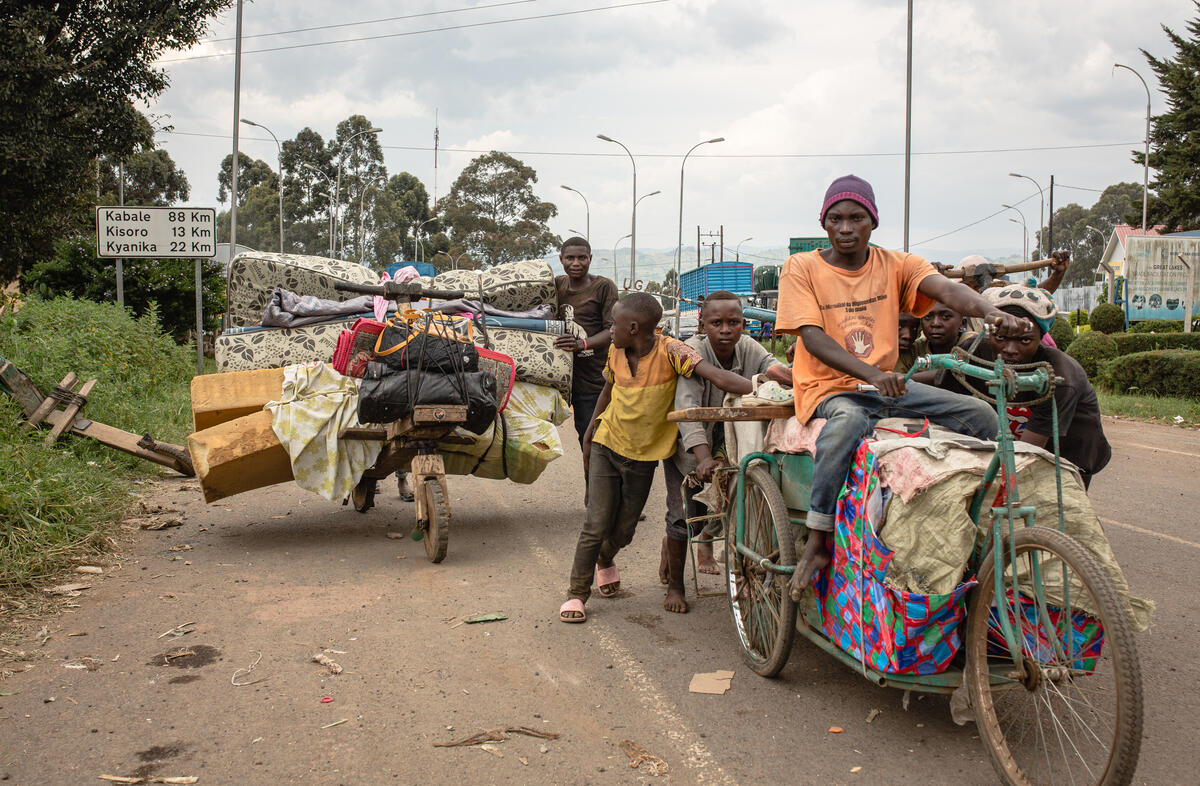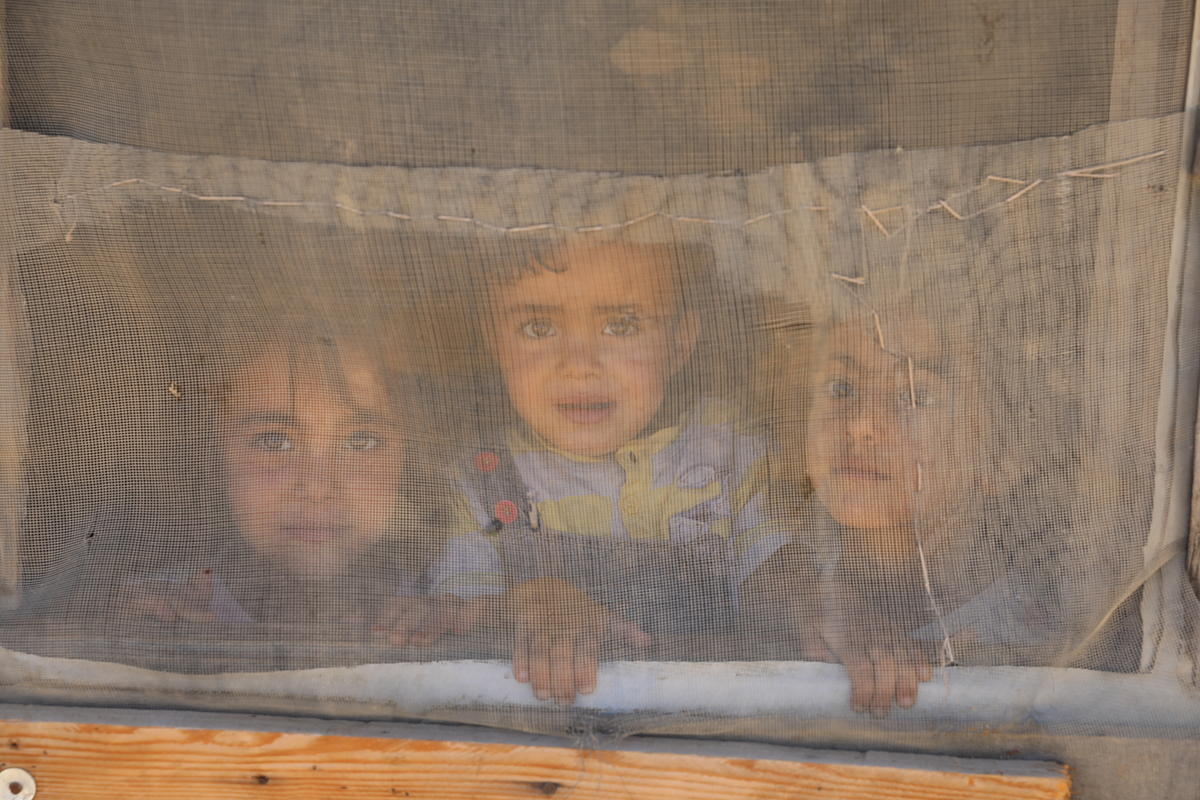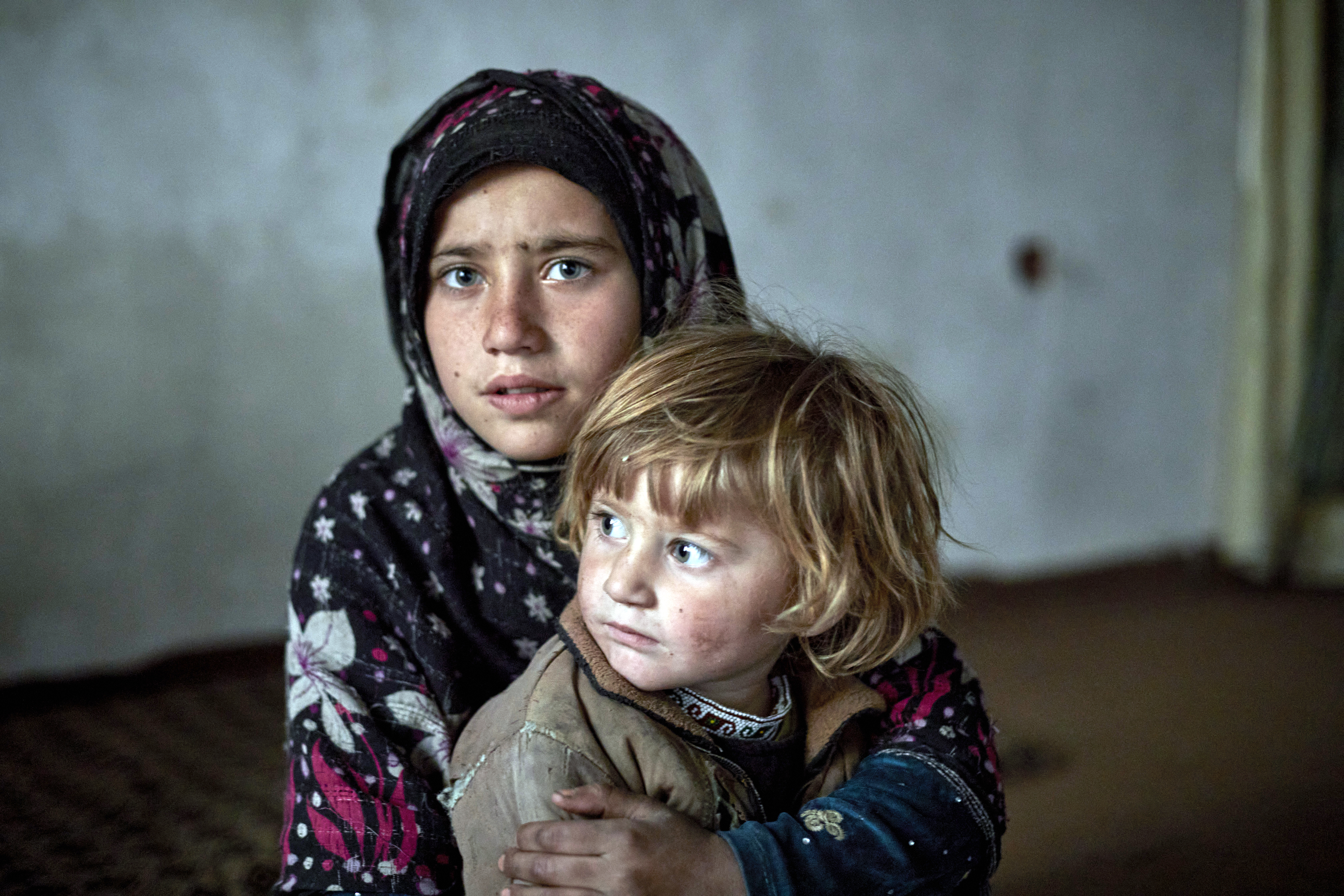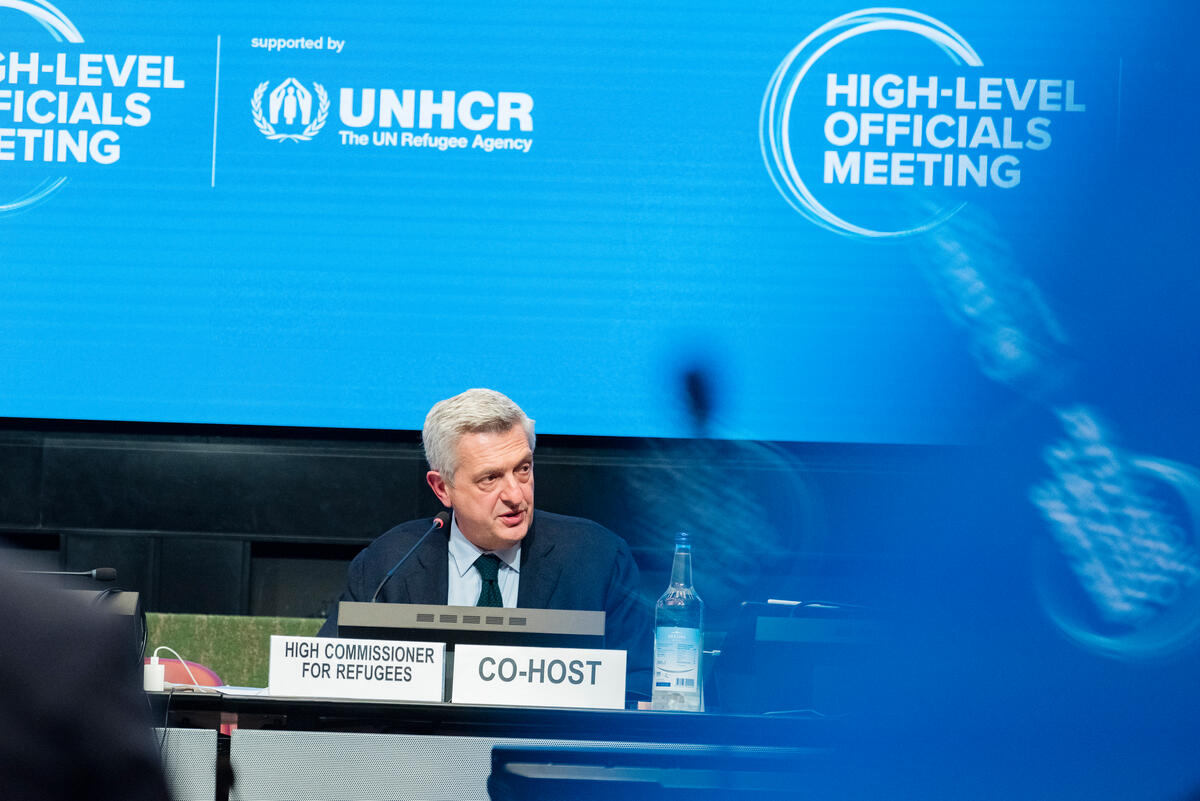On American plains, refugees receive a warm welcome in a cold climate
On American plains, refugees receive a warm welcome in a cold climate

SIOUX FALLS, United States, December 5 (UNHCR) - It is a scene that is being repeated throughout the United States this holiday season. Two young girls wait at an airport to greet their grandmother. Their hands clutching balloons and American flags, they eagerly scan the approaching passengers trying to identify a woman they've never met and who they know only from their mother's stories of a childhood abruptly cut short nearly 20 years ago in Sudan.
When Nagung Ging and her 20-year-old son, Peter, emerge from the crowd they show few signs of fatigue following their disorientating journey from Egypt, where they lived as refugees for much of their lives. Bronika Thon gives her mother a pink woollen hat and helps her to put on a pair of gloves before the group steps out into the cold night.
More than 200 refugees have come to Sioux Falls in the US state of South Dakota this year. Most, like Nagung Ging, are reunited with family. Others arrive knowing no one. For all of them, the towering figure of David Jal, his forehead etched with the tribal scars of his native Sudan, is a reassuring presence.
A senior case manager with the Refugee and Immigration Centre of Lutheran Social Services, Jal and other staff provide a range of resettlement assistance designed to ease the refugees' transition to their new homes. The programmes are backed by a deep outflow of compassion for the refugees' situation, one which is borne out of experience.
Jal lived as a refugee for nearly 10 years, frequently moving camps and at times countries. In 1995, on the recommendation of UNHCR he was resettled to the United States. Few Africans lived in Sioux Falls at the time and he was soon sharing an apartment with three other Sudanese men and working 12 hours a day at a plastics factory. "On Friday nights we'd treat ourselves by picking up hamburgers from a local fast food restaurant," he recalls.
The staff at the refugee centre represent more than a dozen nationalities and translation services are available in 35 different languages and dialects. Case managers are assigned to each new arrival to help them through the first, overwhelming weeks. With US government funding, the refugee centre provides the families with a furnished apartment, with the first month's rent paid.
"Our emphasis is helping people integrate into their new community," says Donna Magnuson, the centre's director. "The families move quickly through the necessary bureaucracy, such as getting social security numbers and food stamps, to looking for work. Our orientation programmes provide English lessons, help in finding a job as well as ongoing support and counselling. Refugees coming to the US are eligible for up to eight months of financial assistance, but our services don't end there."
Adan Hussein attends the orientation classes daily, and is using English phrases just weeks after leaving a refugee camp in Kenya where he lived for 14 years, marrying his wife and starting a family. The 30-year-old from Somalia can recount every significant date of his journey from refugee to Sioux Falls resident, a journey he continued to doubt would be completed until he boarded his plane.
As Hussein recounts his story, his wife Khadija is taken shopping to a local thrift store with two other Somali woman to stock up on donated winter clothing. "When I was at home," says Adan, "only your mother and father provided for you, but here I have been given everything by people I don't even know."
For Mohammed Kadyrov and his wife, Makhpulya, the pursuit of a new life recently reached a milestone. Meskhetian Turks who arrived from Russia last year, the family just celebrated the marriage of their son Eldar. Father and son work at the local meat factory, while Makhpulya is employed at a food processing plant. All agree on the benefits of living in Sioux Falls: job opportunities; affordable housing and low crime. "And we like the people," says Mohammed.
Annual resettlement figures to the US are determined in consultations between the administration and both Houses of Congress during which certain groups and nationalities are highlighted as priorities. These hearings culminate in an announcement of admission ceilings. This year the ceiling was set at 60,000, though the actual number of arrivals was 41,000. But the US remains the number one destination for resettled refugees, accepting more than all other resettlement countries combined.

"The US resettlement programme continues to be a mainstay for UNHCR resettlement efforts around the world," says Larry Yungk, senior resettlement officer for the UN refugee agency in Washington. "Historically, the US has given resettlement opportunities to half of the refugees whom UNHCR has determined to be in need of resettlement. While resettlement needs exist throughout the world, meeting those needs depends entirely on the willingness of individuals and local organisations, like those in Sioux Falls, to welcome refugees into their own community."
The morning after their arrival a case worker from Lutheran Social Services takes a bewildered Najung Ging and her son on a tour of the town. The abductions, beatings, flight and exile are over. It has taken years to reach this point and it will take months more for Sioux Falls' newest refugee family to feel fully settled. But Najung Ging is confident about the future. "When I was coming here," she says, "I was so full of joy at the thought of seeing my daughter again. And when I arrived, I thought I'm finally home."
By Tim Irwin in Sioux Falls, United States


